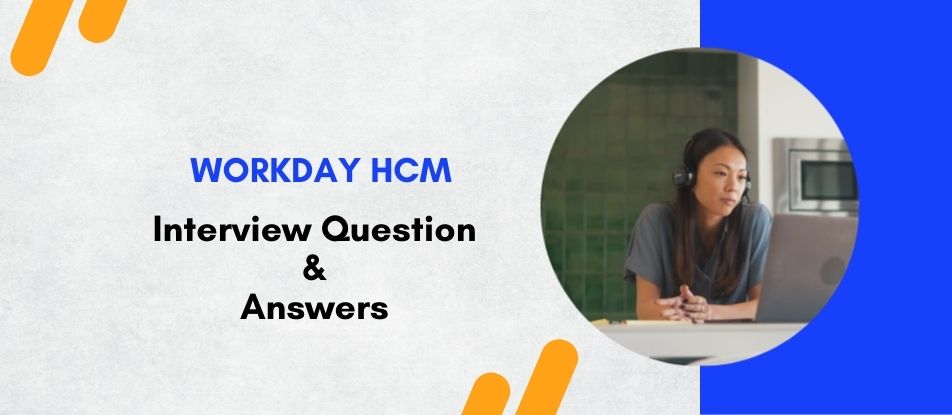
Workday HCM training equips participants with comprehensive knowledge of Workday's Human Capital Management suite, focusing on core functionalities including staffing models, compensation, security groups, and reporting. Trainees learn to manage the full employee lifecycle from hiring through retirement, utilizing real-world scenarios to master system navigation and data management. This course is ideal for HR professionals seeking to leverage Workday for enhanced workforce planning and analytics.
Workday HCM Interview Questions - For Intermediate
1. What is Workday HCM?
Workday Human Capital Management (HCM) is a cloud-based software suite that helps organizations manage their HR functions efficiently.
2. What are the key modules in Workday HCM?
Core HR, Compensation, Benefits, Talent Management, Recruiting, Time Tracking, and Learning.
3. How does Workday support employee self-service?
Employees can access their personal information, benefits, time off, and pay details through the employee self-service portal.
4. Can you explain the concept of business processes in Workday?
Business processes in Workday define workflows for various HR activities such as hiring, promotions, and performance management.
5. What is the significance of security groups in Workday?
Security groups control access to data and functionality within Workday based on roles and permissions.
6. How does Workday handle payroll processing?
Workday automates payroll calculations, tax filings, and compliance requirements while providing configurable payroll elements.
7. What is Workday's approach to reporting and analytics?
Workday offers robust reporting and analytics capabilities, allowing users to create custom reports and dashboards to gain insights into HR data.
8. How does Workday ensure data security and compliance?
Workday follows industry-standard security protocols and compliance regulations, including GDPR and SOC certifications.
9. Can you explain the concept of calculated fields in Workday?
Calculated fields in Workday allow users to perform complex calculations and derive values based on predefined criteria.
10. How does Workday support integration with other systems?
Workday provides integration tools such as Workday Studio and Workday Studio Custom Reports for seamless integration with third-party systems.
11. What is the difference between Workday Core HCM and Workday Recruiting?
Workday Core HCM focuses on managing employee data and HR processes, while Workday Recruiting is specifically designed for the recruitment and hiring process.
12. How does Workday handle performance management?
Workday's performance management module enables organizations to set goals, provide feedback, and conduct performance reviews for employees.
13. Can you explain the concept of Workday Workforce Planning?
Workday Workforce Planning helps organizations forecast and plan their workforce needs based on factors such as growth projections and skill requirements.
14. How does Workday support global deployments and multi-country operations?
Workday provides localized functionality, multi-language support, and compliance features to cater to the needs of global organizations.
15. What are some key benefits of implementing Workday HCM?
Improved HR efficiency, enhanced employee experience, better decision-making through data insights, and scalability for business growth.
16. How does Workday handle employee onboarding and offboarding?
Workday streamlines the onboarding process by automating tasks such as document collection, training assignments, and provisioning of access.
17. What role does Workday play in workforce planning and analytics?
Workday enables organizations to analyze workforce trends, identify skill gaps, and make data-driven decisions to optimize their workforce strategy.
18. Can you explain the concept of Workday tenant?
A Workday tenant is a separate instance of the Workday application environment for each organization, ensuring data isolation and customization.
19. How does Workday support mobile access for employees and managers?
Workday offers a mobile app that allows employees and managers to access HR information, submit requests, and approve tasks on the go.
20. What are some common challenges organizations face during Workday implementation?
Data migration, change management, user adoption, and integration complexities are some common challenges organizations may encounter during Workday implementation.
Workday HCM Interview Questions - For Advanced
1. How do you integrate Workday with other third-party systems?
Integrating Workday with third-party systems typically involves leveraging Workday's robust Web Services API, which supports REST and SOAP protocols. The process includes configuring Workday's Enterprise Interface Builder (EIB), which allows for both inbound and outbound integration. Additionally, Workday Studio can be used for complex transformations and integrations, requiring a deep understanding of Workday's underlying data model and business processes to ensure data consistency and integrity.
2. Explain the process of setting up security groups in Workday.
Security groups in Workday are set up by defining roles and assigning them to users based on their job responsibilities. This involves creating Domain Security Policies to control access to data within specific domains and Business Process Security Policies to manage who can initiate, approve, and complete business processes. Fine-grained security configurations ensure that users access only the data necessary for their roles, maintaining compliance and data privacy.
3. Discuss the method of configuring compensation packages in Workday.
Configuring compensation packages in Workday involves setting up compensation elements such as salaries, wages, bonuses, and stock options. This process includes defining compensation rules, eligibility rules, and grade profiles tailored to the organization's compensation structure. These packages are then assigned to employees based on their role, performance, and organizational policies, using compensation matrices and benchmarks to ensure equitable and competitive compensation.
4. What are the best practices for managing large-scale data migrations in Workday?
Best practices for managing large-scale data migrations in Workday include thorough planning and mapping of existing data to Workday's data structures. It is critical to perform iterative testing phases—such as unit testing, system testing, and user acceptance testing—to validate data integrity and accuracy. Utilizing Workday's provided templates and EIB for bulk uploads can streamline the process, while custom reports are used for data validation and reconciliation post-migration.
5. How would you optimize Workday performance for global organizations?
Optimizing Workday performance for global organizations requires configuring regional settings such as languages, currencies, and time zones appropriately. Leveraging Workday's scalable architecture by designing efficient business processes and security configurations can reduce load times and enhance user experience. Additionally, regular audits of system usage and configurations help identify performance bottlenecks and opportunities for optimization.
6. Describe the process of creating custom reports in Workday and their practical applications.
Creating custom reports in Workday involves using the Report Writer tool, which allows users to design reports based on specific business requirements. These reports can pull data from multiple sources within Workday, using filters and prompts to deliver tailored insights. Practical applications include generating compliance reports, analyzing workforce demographics, and tracking compensation trends, providing strategic data to stakeholders for informed decision-making.
7. Can you explain the tenant management in Workday?
Tenant management in Workday involves overseeing the environments provided for different stages of the system lifecycle, such as implementation, testing, and production. Managing these tenants requires careful configuration of system settings and data to ensure that each environment accurately reflects the necessary conditions for its purpose. This includes regular updates, data refreshes from production to testing environments, and monitoring system health and performance.
8. What strategies would you employ to ensure compliance with GDPR in Workday?
Ensuring compliance with GDPR in Workday requires implementing data privacy protocols such as data masking, secure data storage, and audit trails to track data access and modifications. Configuring Workday to handle data subject rights, such as access, rectification, and deletion requests, is essential. Regular training for users on GDPR policies and continuous review of data processing agreements with third parties are also crucial to maintain compliance.
9. How do you handle error handling and troubleshooting in Workday integrations?
Handling error handling and troubleshooting in Workday integrations involves setting up robust error logging and notification mechanisms to capture and alert on integration failures. Using Workday's built-in dashboards and reports to monitor integration health and performance is key. Developing a systematic approach to diagnosing issues, including checking data formats, endpoint availability, and authentication issues, helps quickly resolve integration errors.
10. Discuss the role of Artificial Intelligence in enhancing Workday HCM functionalities.
Artificial Intelligence enhances Workday HCM functionalities by enabling predictive analytics and machine learning models that improve decision-making processes. AI can be used to predict employee turnover, optimize recruitment processes, and personalize employee learning and development plans. Additionally, AI-powered chatbots and virtual assistants in Workday can streamline HR inquiries and transactions, enhancing user experience and operational efficiency.
Course Schedule
| Jan, 2026 | Weekdays | Mon-Fri | Enquire Now |
| Weekend | Sat-Sun | Enquire Now | |
| Feb, 2026 | Weekdays | Mon-Fri | Enquire Now |
| Weekend | Sat-Sun | Enquire Now |
Related Courses
Related Articles
Related Interview
Related FAQ's
- Instructor-led Live Online Interactive Training
- Project Based Customized Learning
- Fast Track Training Program
- Self-paced learning
- In one-on-one training, you have the flexibility to choose the days, timings, and duration according to your preferences.
- We create a personalized training calendar based on your chosen schedule.
- Complete Live Online Interactive Training of the Course
- After Training Recorded Videos
- Session-wise Learning Material and notes for lifetime
- Practical & Assignments exercises
- Global Course Completion Certificate
- 24x7 after Training Support


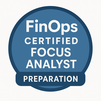

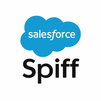
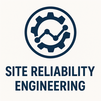
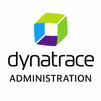
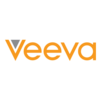

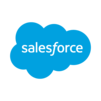


 Join our Live Instructor-Led online classes delivered by industry experts
Join our Live Instructor-Led online classes delivered by industry experts